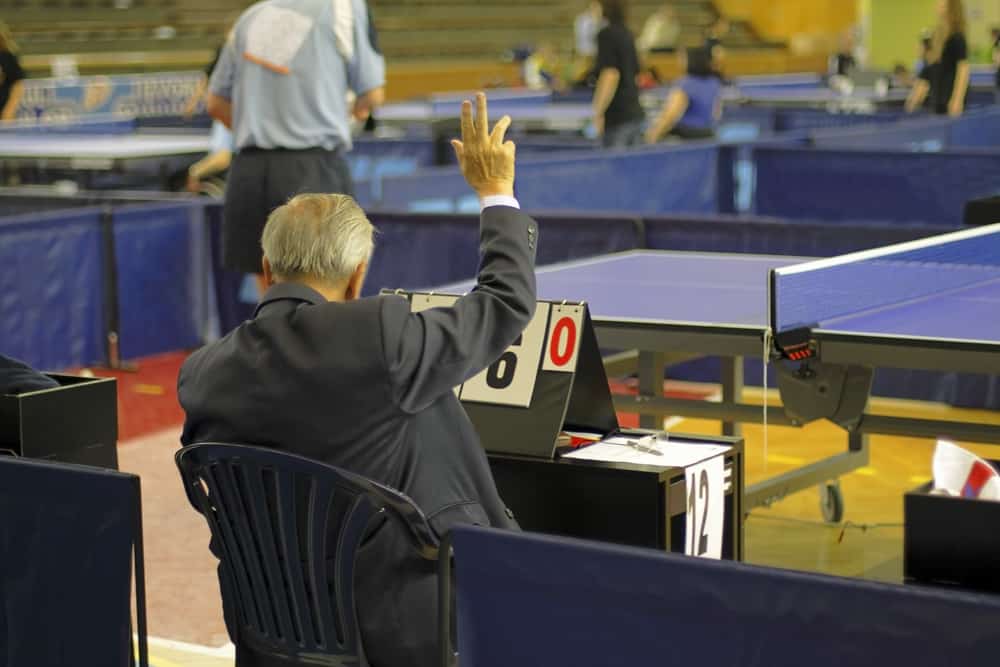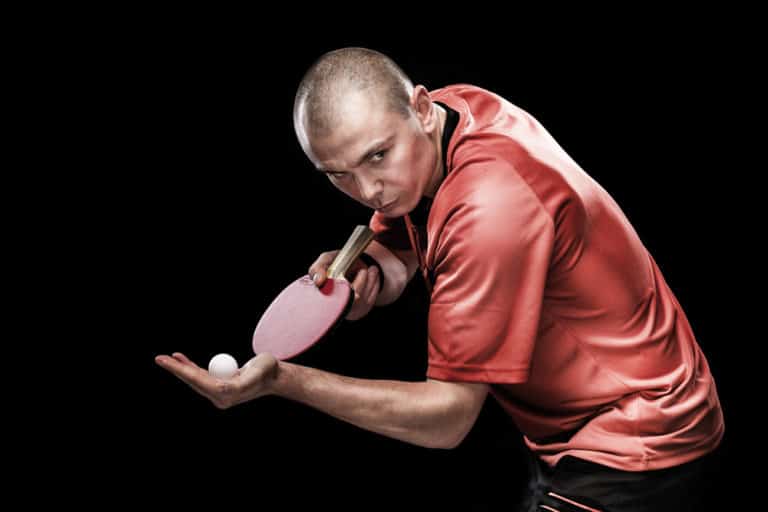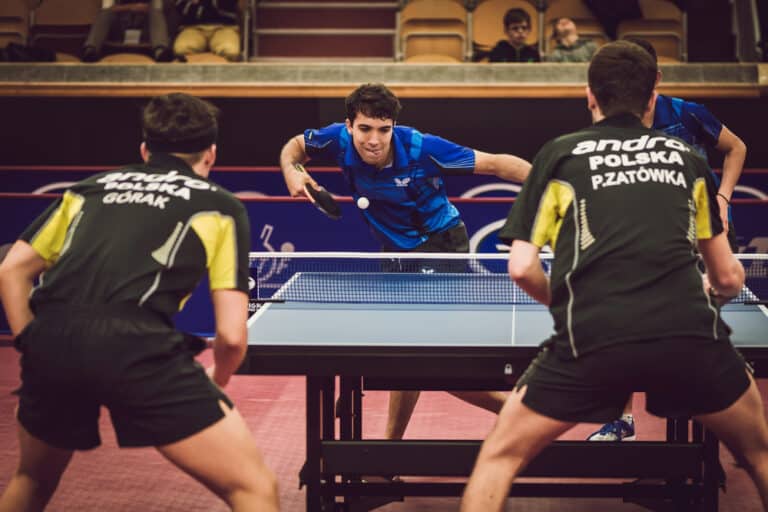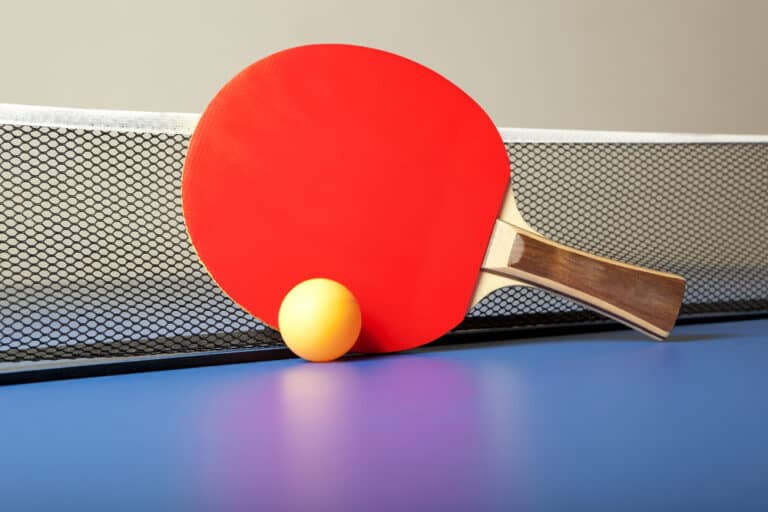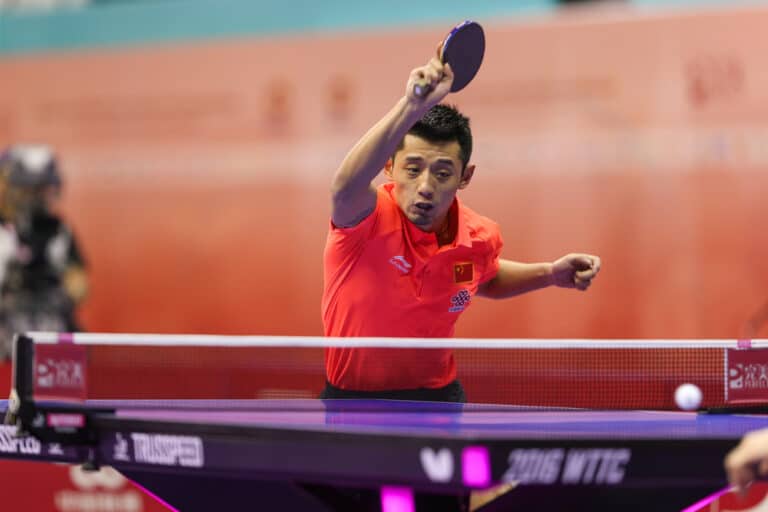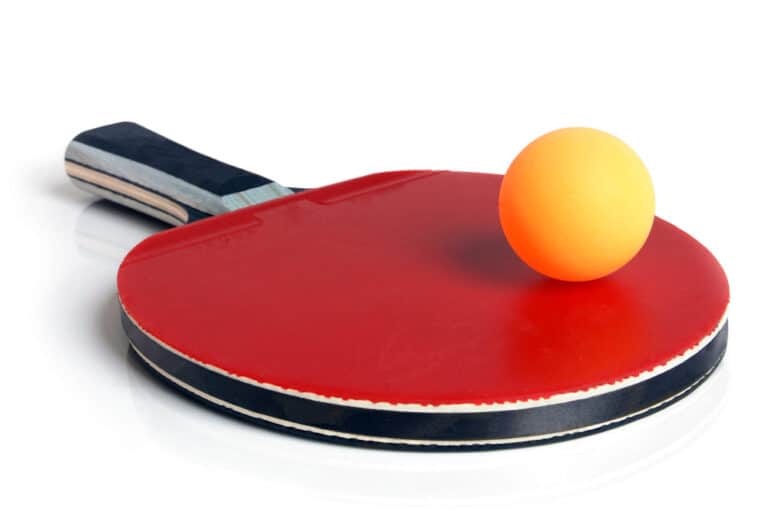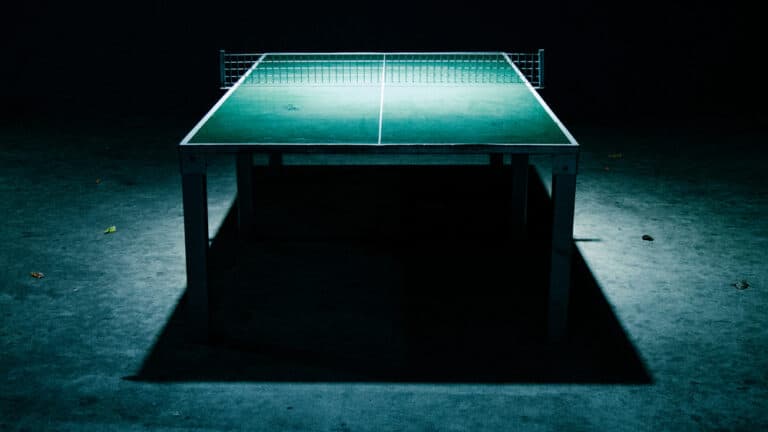Is There A Time Limit In Table Tennis?
When I watch competitive table tennis, it seems to have a frenetic pace that seems non-stop from beginning to end. At a glance, it would appear as if the players are racing against a time limit of sorts. So, I set about looking for the answers and this is what I found.
There is no specific time limit to a table tennis match. Modern matches with 11-point games finish in 30 to 60 minutes. The only time limits are the breaks during a match. Players get 1 minute between games, up to 1 minute for a timeout, and a few seconds for toweling off every 6 points.
Let’s take a closer look into all of these time limits and what happens to players who don’t respect the time limits.
Is There A Time Limit In Table Tennis
Even though there is no specified time limit in table tennis, most of the time a single game of table tennis will last between 6 and 12 minutes, while a full match can last anywhere between 30 and 60 minutes.
In the past, when I played more competitively, matches would last longer. Back then each game was played to 21 points and the match was the best of 5 games. That changed in 2001 when the ITTF amended the rule to make each game of table tennis played till one player reached 11 points instead of 21. The tiebreak rule of needing a 2-point lead was maintained if the score reached 10:10 in the same way it was in the past when the score was 20:20.
The effect of the 2001 rule change was that the duration of table tennis games was reduced by 50% on average.
Is There A Time Out In Table Tennis?
During a table tennis match, each player (or their team) is entitled to call one time-out with a maximum duration of 60 seconds. A player is neither obligated to take a time-out nor are they obligated to use the full 60 seconds of their time-out. The player calling the time-out has the right to cut the time-out short by returning to the table early and the opponent will be obligated to return to the table at the same time.
How Many Timeouts Are There In Table Tennis?
Both players are entitled to one time-out per match that has a maximum duration of one minute. In the case of doubles, each pairing has one time-out per match – the number of time-outs does not increase because there are 4 players in doubles instead of 2.
A time-out can be called by either player or their coach. In the case of a team event, the team captain or the team coach can also call the time-out. As you can understand, a time-out cannot be called during a rally and can only be called between points.
A time-out is called by telling the referee “TIME OUT” between points. Players or their teams use their time-out as a tactical weapon against an opponent to try and disrupt their rhythm or to break a streak where the opponent has been winning multiple consecutive points. During the time-out, both players (or both teams in the case of doubles) have the right to talk to their team captains and coaches and receive tactical advice.
As I mentioned earlier, a time-out can have a maximum duration of one minute. However, the duration of the time-out is not fixed at 60 seconds. The player calling the time-out has the right to specify the length of the time-out by cutting it short if they so wish. The way that the player who called the timeout cuts it short is by walking back to the table. The opponent will be obligated to walk back to the table at the same time even if they are in the mid-sentence of their discussion with their coach. Therefore it is not uncommon for a time-out in a professional match to only last 20 seconds.
Is There A Limit On Let Points In Table Tennis?
There is no limit on the number of let-points in table tennis, not in the match, nor even on a single point. This rule is identical to the let-point rule that you have in any racket-sport where a let-point is played.
The service limitation in table tennis is that there is no second service if the first service is a fault. If you make a single fault on your service in table tennis you lose the point.
However, if the ball clips the net and lands in on a service, a “let” will be called. If the ball had clipped the net and landed out it would have been a fault. The player serving will then repeat the service with no change to the scoreboard. If the next service clips the net and lands in again, another “let” will be called and the service will be repeated. This continues until such time that the player that is playing the service either makes a fault, and loses the point, or plays a “clean” service in which case the rally will continue as normal.
Remember that a “let” can only be called on a service. If the ball clips the net and doesn’t go out, during a rally, it is a legal shot and the rally will continue as normal.
How Long Does A Table Tennis Match Last?
During professional tournaments, an individual table tennis game normally lasts about 6 minutes on average. Games that go to a score of 10:10 and need a 2-point winning margin will naturally last a bit longer.
A full match at the professional level, including breaks between games time-outs, and towel breaks every 6 points can last between 30 minutes and 60 minutes depending on how many individual games need to be played to determine the result.
How Many Sets In Table Tennis?
Table tennis does not have sets in the same way that tennis does. Instead, what many people may think of as “sets” are what table tennis players call games. A normal match in table tennis is played as the best of 5 games, or the first to win 3 games. During each game, the first player to score 11 points wins the game as long as there is a minimum of a 2-point winning margin.
There is an exception to this rule at the Olympic Games, which we will discuss in a moment.
How Many Sets Are There In The Table Tennis Olympic Championship?
Table tennis at the Olympic Games is split into a women’s competition and a men’s competition. Within those two categories, there will be singles and doubles competitions.
During the doubles competition, matches will be decided as the best of 5 games in the same way that most table tennis matches are played around the world. However, singles table tennis matches at the Olympic games are contested as the best of 7 games – adding additional prestige to the singles title at the Olympic Games.
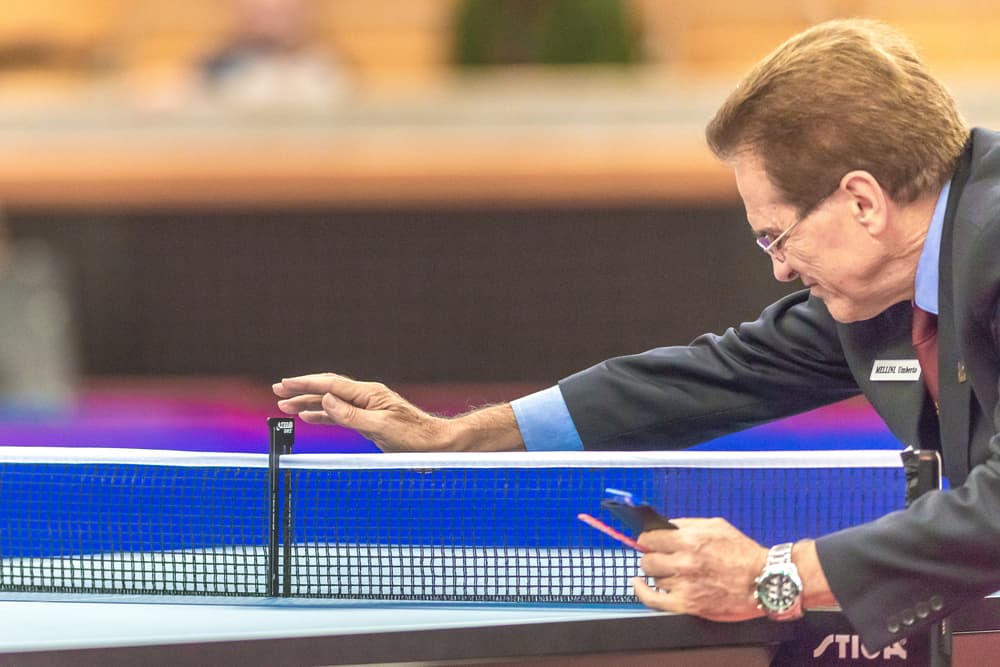
How Long Do The Players Have Between The Successive Games Of A Match?
The standard interval between successive games in a table tennis match is 1 minute. Players must leave their racket on the table during the break as the rules do not allow players to change their racket unless it has been damaged.
If a player does not leave their racket on the table during a break between games both the opponent and the umpire have the right to inspect the racket before play resumes.
Players are required to stay within 3 meters of the table during a break between games, so there are no lengthy bathroom breaks as there are in tennis. Able-bodied players cannot use the medical timeout for a bathroom break as needing the bathroom is something that could have been foreseen before the start of a 30-minute match.
There is an exception to this rule in para table tennis where an umpire can use the 10-minute injury timeout if a wheelchair player needs to use the toilet.
The Rules For A Medical Timeout In Table Tennis
A medical or injury timeout in table tennis is far less common than it is in tennis, for instance. The maximum period of a medical timeout is 10 minutes in the very rare instances when it is applied.
One example of when a medical timeout will be called is if a player cuts themself and there is blood. The umpire will call the timeout only for the amount of time it takes to dress the wound to stop the bleeding and to clean up any blood.
Many people think that something like a cramp is grounds for a medical timeout in table tennis. However, this is not necessarily the case. If the cramp arises from a player falling, then an injury timeout can be called because the cramp is associated with the fall.
If the cramp is associated with general fatigue as a result of a lack of fitness, a medical timeout will not be called as the onus is on the player to arrive at a competitive match with sufficient fitness to complete the match.
The rule for table tennis tournament play is very clear on this and states: “A suspension shall not be allowed for a disability which was present or was reasonably to be expected at the beginning of the match, or where it is due to the normal stress of play. Disability such as cramp or exhaustion, caused by the player’s current state of fitness or by the manner in which play has proceeded, does not justify such an emergency suspension, which may be allowed only for incapacity resulting from an accident, such as injury caused by a fall.”
What Is The Timing Between Matches?
There is no specific rule that determines the amount of time that needs to elapse between matches in a table tennis tournament. This is usually covered by the scheduling of a tournament.
In most instances, there will be a time gap of 5 minutes between the matches in the same round of the tournament or between the individual matches of a team competition. However, between rounds of a competition such as between the quarter-final and the semi-final or between the semi-final and the final, there will be a longer time gap. In the instances where the different rounds are all played on the same day, the recommendation is that the time gap between rounds should be a minimum of 40 minutes.
Are There Yellow Cards In Table Tennis?
The use of cards in table tennis is not covered by the laws/rules of the game but are included in the regulations for tournament play.
Before we continue to the role of yellow and red cards and how they apply in table tennis and time limits, we must first cover the other card that a match referee can hold up, the white card.
The referee will hold up a white card to indicate that a timeout has been called and that the 60 seconds of the timeout starts after the referee holds up the white card.
The use of yellow and red cards is for instances where a player, coach, or teammate in the case of a team competition “misbehaves”. The first yellow card will be a warning to the player and coach. When a second yellow card is shown, one point will be awarded to the opponent. Two points will be awarded to the opponent should a third yellow card be shown.
One offense that gives rise to a yellow card is coaching, especially if the coach is calling advice to the player during a rally. In some instances, a coach can be shown a red card and be ejected from the playing hall.
Where this applies to time limits in table tennis is when a player is seen to be deliberately wasting time such as taking too long to return to the table after a timeout, after the break between games, or taking too long to towel off every 6 points.

